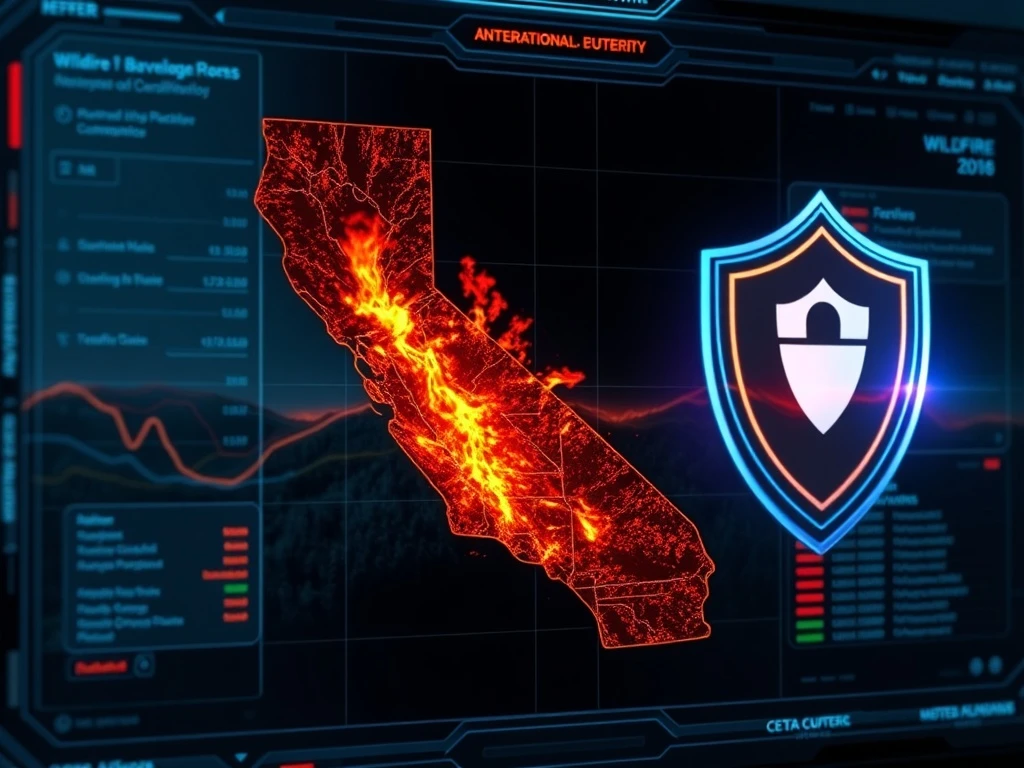California faces significant wildfire challenges. The state’s insurance market struggles to adapt. Now, Moody’s Corporation (NYSE: MCO) offers a vital solution. Its advanced Moody’s Wildfire Risk Model successfully completed a rigorous review. The California Department of Insurance (CDI) conducted this process. This crucial approval marks a pivotal moment. It benefits homeowners, insurers, and the state. It stabilizes California’s property insurance market. This development promises to transform wildfire risk assessment and management.
Moody’s Wildfire Risk Model: A Game Changer for California Insurance
The approval of the Moody’s Wildfire Risk Model (RMS U.S. Wildfire Model v2.0) is significant. Insurers can now use this catastrophe model in residential rate filings. This directly supports California’s Sustainable Insurance Strategy. The strategy aims to stabilize the state’s property insurance market. Insurers gain access to advanced, science-driven analytics. They can assess and price wildfire risk with greater precision. Michael Steel, Head of Insurance Solutions at Moody’s, underscored this commitment. He stated, “At Moody’s, we are committed to providing markets with transparent, scientifically rigorous tools to decode today’s interconnected risks.” This marks a major step forward. It addresses wildfire risk complexities. It also promotes greater resilience for insurers, regulators, and homeowners.
CDI Approval: A Milestone for Moody’s Wildfire Risk Model
The California Department of Insurance (CDI) conducted a thorough review. This process is known as the Pre-Application Required Information Determination procedure. It examines hazard, vulnerability, and actuarial components. The successful completion means the Moody’s Wildfire Risk Model meets California’s high standards. This rigorous evaluation ensures the model’s reliability and accuracy. It builds trust in its capabilities. The model is already in use by leading global insurers, reinsurers, and financial institutions. This widespread adoption underscores its proven effectiveness. It is available on the Moody’s RMS Intelligence Risk Platform™, along with Risk Modeler™ and ExposureIQ™. These tools support a full range of wildfire risk management activities.
Advanced Analytics: Powering Moody’s Wildfire Risk Model
The Moody’s Wildfire Risk Model v2.0 represents a major advancement. It captures the complexities of wildfire behavior. This includes extreme urban conflagration events. A key feature of the model is its ability to account directly for property-level and community-wide mitigation efforts. By incorporating property-specific data, the model aligns with California regulations. This empowers insurers to recognize and reward homeowners. They receive incentives for risk-reduction efforts. This creates tangible benefits for those who actively protect their properties. The model’s sophisticated algorithms process vast amounts of data. This provides insurers with a clearer picture of potential losses.
Incentivizing Resilience with Moody’s Wildfire Risk Model
One of the most impactful aspects of the Moody’s Wildfire Risk Model is its focus on incentivizing mitigation. Homeowners often invest in measures like defensible space or fire-resistant building materials. Previously, these efforts might not have directly impacted their insurance rates. Now, the model allows insurers to accurately reflect these reductions in risk. This creates a powerful incentive for more homeowners to undertake such crucial work. Rewarding proactive measures strengthens overall community resilience. It reduces the financial burden on individuals and the state. This fosters a collaborative approach to wildfire preparedness. It encourages everyone to play a part in reducing risk.
Impact on the Insurance Market and Homeowners
This enhanced risk assessment, enabled by the Moody’s Wildfire Risk Model, supports a more resilient and accessible insurance market. This is especially true in wildfire-prone areas. Historically, some insurers have pulled out of California due to escalating wildfire risks. The new model provides the tools needed for more stable and predictable pricing. This could encourage insurers to re-enter or expand their presence. For homeowners, this means potentially fairer premiums. It also offers clearer pathways to securing necessary coverage. This stability is vital for California’s economic health. It provides peace of mind for residents in high-risk zones.
The successful completion of the CDI review for the Moody’s Wildfire Risk Model marks a significant milestone. It brings advanced, scientifically rigorous tools to the forefront of wildfire risk management in California. This development promises to foster a more resilient and stable insurance market. It empowers both insurers and homeowners. Ultimately, it strengthens the state’s ability to navigate the complex challenges posed by wildfires. Moody’s continues to provide crucial insights in a world of interconnected risks.
Frequently Asked Questions (FAQs)
What is the Moody’s Wildfire Risk Model?
The Moody’s Wildfire Risk Model (specifically the RMS U.S. Wildfire Model v2.0) is an advanced catastrophe model. It helps insurers assess and price wildfire risk for residential properties. It incorporates scientific analytics and property-level mitigation efforts.
Why is the California Department of Insurance (CDI) approval important?
The CDI approval is crucial because it allows insurers to use this forward-looking model in their residential rate filings in California. This supports the state’s efforts to stabilize its property insurance market and promotes accurate risk assessment.
How does the Moody’s Wildfire Risk Model benefit homeowners?
The model benefits homeowners by enabling insurers to recognize and reward their risk-reduction efforts, such as creating defensible space. This creates tangible incentives for mitigation, potentially leading to fairer premiums and better access to coverage.
What specific features make this model advanced?
The model captures the complexities of wildfire behavior, including extreme urban conflagration events. It also directly accounts for property-level and community-wide mitigation efforts, using property-specific data aligned with California regulations.
Where is the Moody’s Wildfire Risk Model currently available?
The model is available on the Moody’s RMS Intelligence Risk Platform™. It integrates with Risk Modeler™ and ExposureIQ™ to support comprehensive wildfire risk management activities. It is already in use by leading global insurers and financial institutions.


















